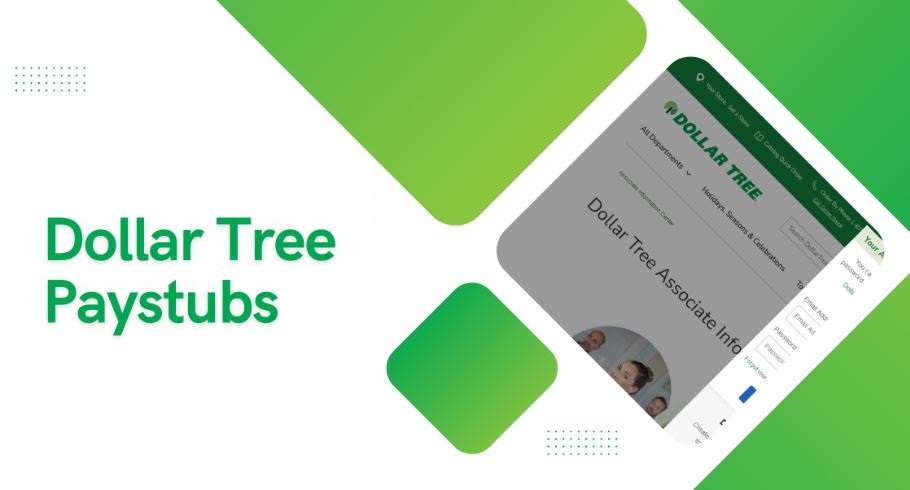The paystub for the dollar tree is a crucial document that gives specific information regarding the employee’s earnings and deductions during a particular pay period. It is a document for all transactions that relate to the employee’s pay, tax and benefits.

How to Read Your Dollar Tree Paystub
- Find the Gross pay: Start by looking at the top of your pay stub, which is where you’ll see your total earnings before deducting them.
- Review Deductions Review the section on deductions to determine the amount of money being taken from your salary. This section is typically categorized to show clearly where your money goes.
- Check Your Net Pay: Look at the bottom of your pay stub to see your net earnings. This is the actual amount you earned during the period of pay.
Key Components of a Dollar Tree Pay Stub
Gross Pay:
A gross salary is defined as the amount you earn before deductions are considered. That includes hourly earnings, overtime pay, bonuses, and any other earnings. For full-time employees, this could also be comprised of wages before deductions.
Deductions
Deductions are charges subtracted from your gross pay. These can be categorized into two:
Mandatory Deductions
- Federal and state taxes: This is the amount that you are withheld from income tax withheld by the federal government and state, which varies depending on your income and your tax bracket.
- Social Security and Medicare: Contributions to Social Security and Medicare are also known as FICA taxes.
- State Disability Insurance (SDI): Applicable in certain States, the deduction can be used for temporary disability insurance.
Voluntary Deductions
- Health Insurance Premiums: If you are enrolled in a health insurance policy through Dollar Tree and pay the premium, the amount will be taken out here.
- Pension Plan Contributions Contributions to pension plans, such as 401(k), will be included.
- Other deductions: This may include life insurance fees, union dues or charitable donations, depending on the type of plan you choose to join.
Net Pay
Net pay, or take-home pay, is the sum you get after subtracting deductions from your salary. It is the amount deposited into your bank account or issued as a cash check.
FAQs
What should I do if I find a discrepancy?
If you spot any anomalies on your pay stub or notice any discrepancies, immediately call the HR division or your manager to address the problem.
How can I use my paystub for budgeting?
Paystubs provide a detailed overview of your income and deductions. It helps you know how much money is available to spend and conserve.
Why is my net pay less than my gross pay?
Your net income is lower than your gross salary because of mandatory and voluntary deductions, such as taxes, insurance premiums, and retirement contributions.
